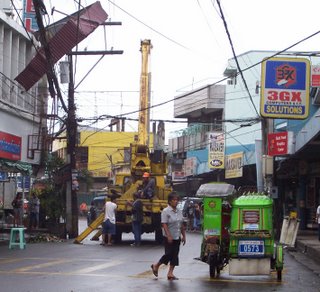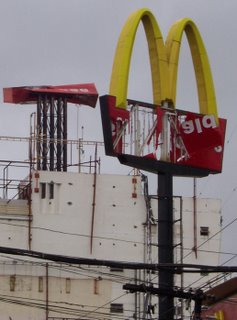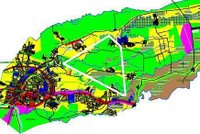I WENT around the city center again looking for an 'live' internet cafe as I wasn't able to find one yesterday; fortunately, there's already one at PT&T. As far as I know, Bayantel and Digitel are still down.
Power is yet to be restored, and it is only expected to be back online tomorrow at the earliest, Mayor Jesse Robredo announced over the radio this morning. Government services, particularly garbage collection, is expected to normalize by Monday. But the city has hummed back to life. Most businesses have opened since yesterday. On the other hand, many schools, particularly at the elementary level, have decided to postpone classes to Monday instead and focus on putting things back into shape. Exceptions include Ateneo de Naga University and the Camarines National High School which resumed operations a full day after Typhoon Milenyo struck.
The city government and volunteer groups are focusing their attention today on collecting debris, mostly fallen tree branches, that residents have collected and piled up along city streets. Yesterday's efforts centered on road clearing, as trees felled by Milenyo littered the city's main and secondary roads. It was another occasion where the local community, as Filipinos are wont to do in the aftermath of calamities, came together as one.
When the winds eased up at 6 am yesterday, I tried to motor down to the centro looking for gas. Three tree trunks blocked the wooded section of the Naga-Carolina road along Km 8. Two hours later, it was already passable, thanks to the efforts of a handful of local residents, including one who volunteered his chainsaw that speeded the cutting and chopping down of the biggest one. Oca Orozco, the city environment officer, passed us by on board his motorcycle. He had went around, he said, and told me that Sitio Caromatig had many more fallen trees blocking traffic.
Five hundred meters down the road, another old man was busily hacking at a smaller tree with his trusty bolo, knowing that life will be much easier for everyone. They did not wait for government to do the task for them.
Naga appears to have been spared of the typhoon's projected peak winds of 260 kph. According to Mike Padua's own weather station in Naga, the strongest wind gust that hit us only reached a maximum of 106 kph. Its eyewall went past by at around 11 pm, about 30 kilometers south-southwest of the city.
But the rest of the province, especially nearby Iriga City, were badly hit, according to DWNX which has been doing emergency broadcast on its own power over the last two days. As of this morning, 1 of the reported 2 casualties in Camarines Sur was from the place, the other coming from Libmanan. Today's Inquirer on the other hand said Milenyo left 8 people dead in neighboring Albay province, including 1 in Legazpi City.
More...
 Mayor Robredo checking PT&T's fallen microwave tower. I later saw it when I did the previous post at the PT&T office.
Mayor Robredo checking PT&T's fallen microwave tower. I later saw it when I did the previous post at the PT&T office. A fallen signboard staring down Casureco II's boom truck.
A fallen signboard staring down Casureco II's boom truck. The payloader of the City Engineer's Office hoisting a chainsaw-armed frontliner, taking on a fallen acacia at the Civic Center...
The payloader of the City Engineer's Office hoisting a chainsaw-armed frontliner, taking on a fallen acacia at the Civic Center...











